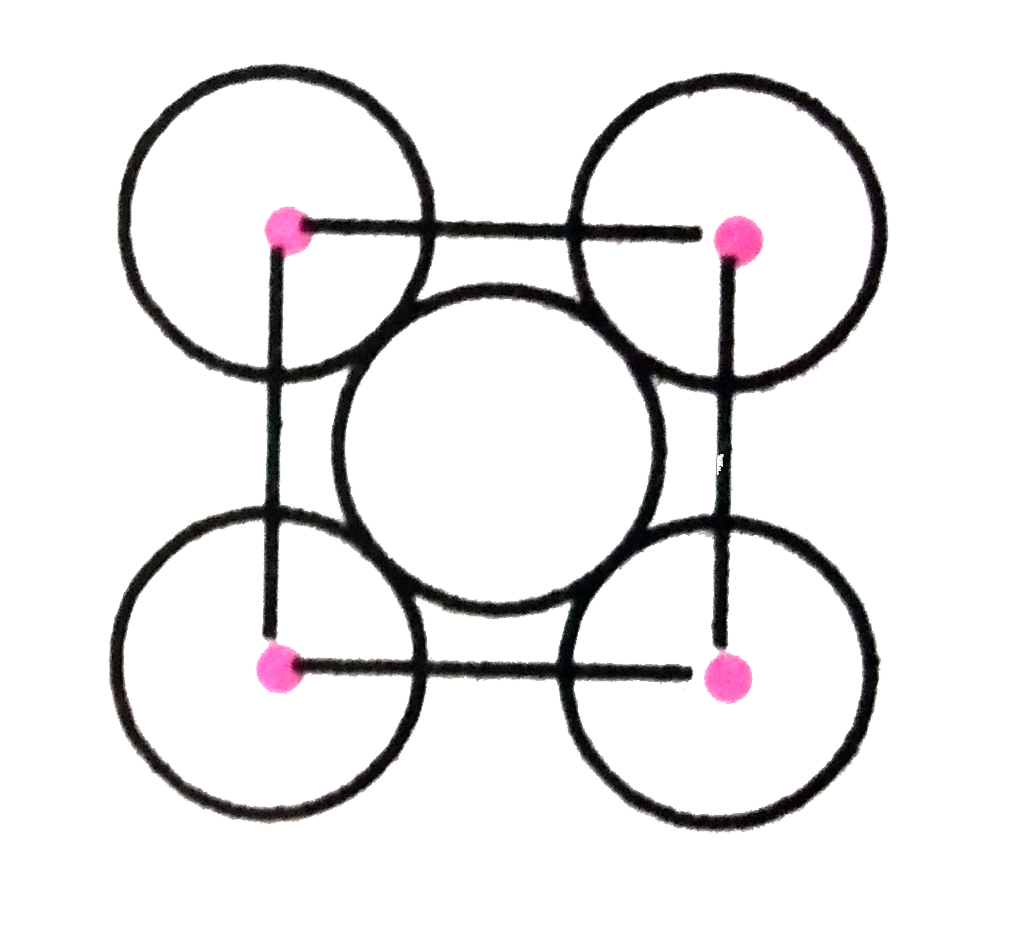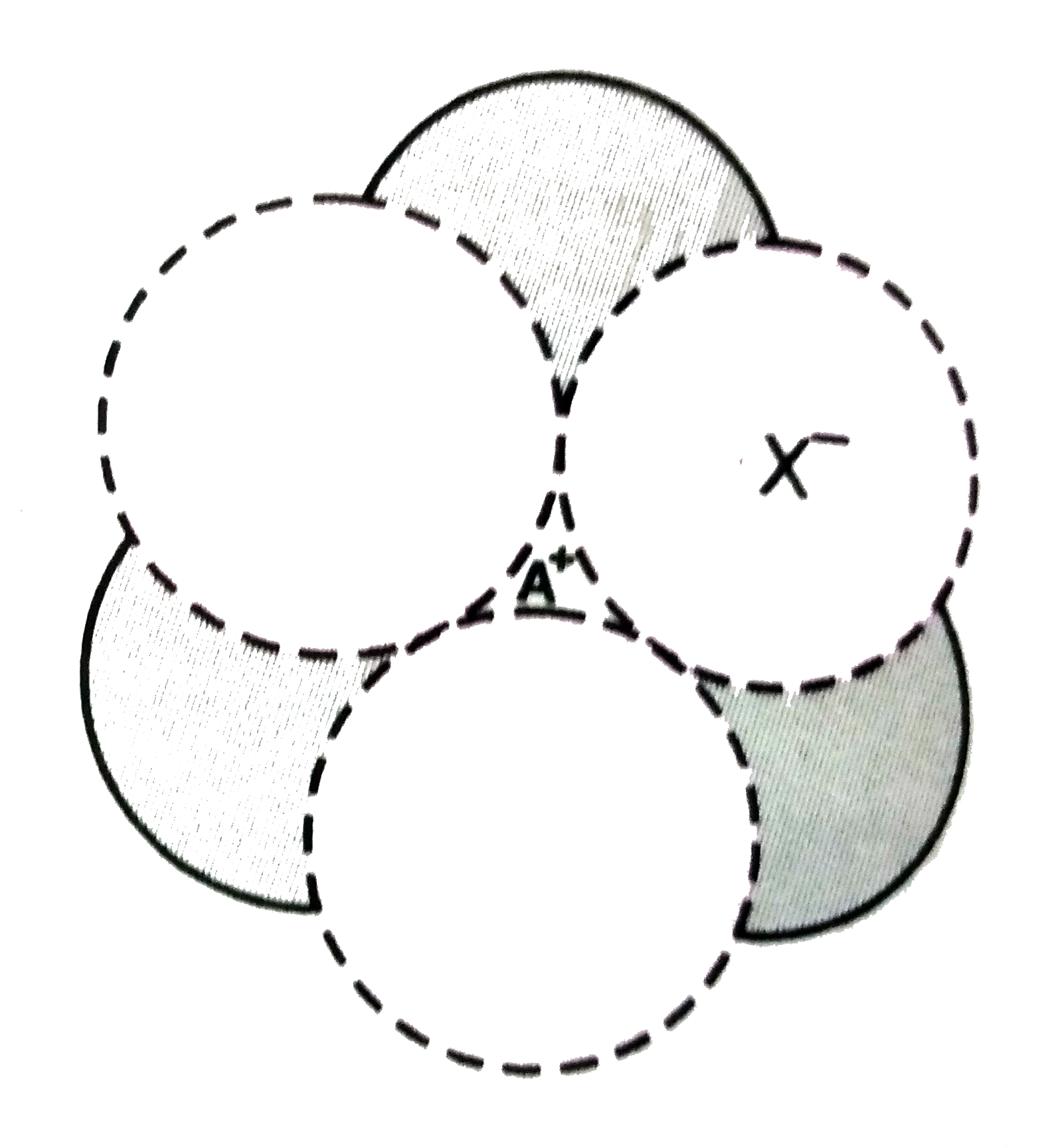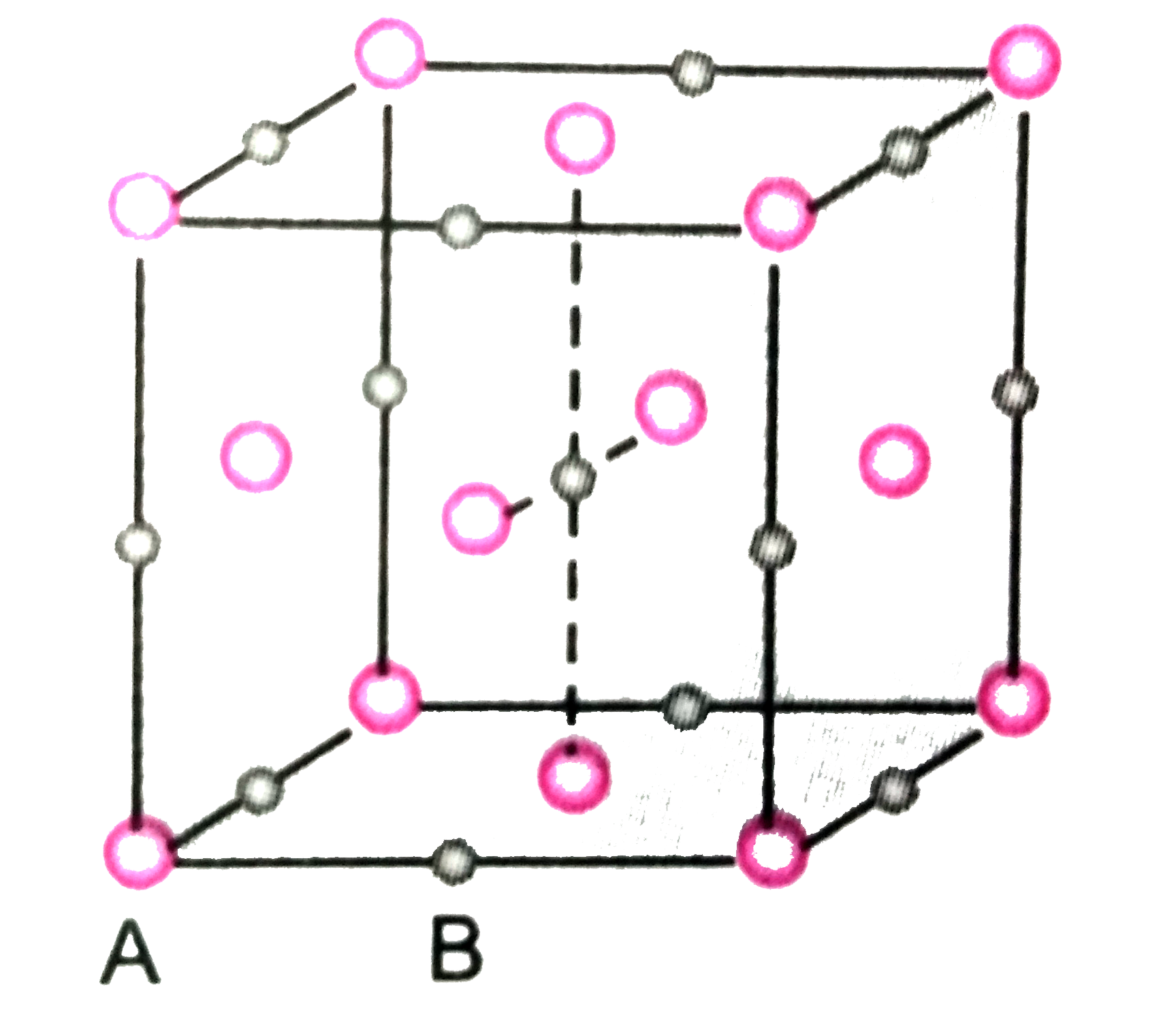Complete Solutions to COMPETITION FOCUS (I.MULTIPLE CHOICE) of chapter STATES OF MATTER: SOLID MATTER of Class 11 book with complete answers and questions
| Class 11 | CHEMISTRY |
| Chapter | STATES OF MATTER: SOLID MATTER |
| PRADEEP | COMPETITION FOCUS (I.MULTIPLE CHOICE) |
| Number Of Questions | 52 |
| Academic Year | 2023-24 |
Which of the following exists as covalent crystals in the solid state?
View SolutionWhich of the following statements about amorphous solid is incorrect ?
View SolutionHow many unit cells are present in a cube - shaped ideal crystal of NaCl of mass 1.00 g ? [ atomic masses : Na =23,Cl-=35.5]
View SolutionIn a face centred cubic lattice, atom `A` occupies the corner positions and atom `B` occupies the face centred positions. If one atom of `B` is missin from one of the face centred points,, the formula of the compound is `:`
View SolutionThe vacant space in bcc lattice unit cell is :
View SolutionIf spheres of radius 'r' are arranged in ccp fashion (ABC ABC…) , the vertical distance between any two consecutive A layers is
View SolutionThe pyknometric density of sodium chloride crystal is `2.165xx10^(3)kg m^(-3)` while its `X` ray density is `2.178xx10^(3)kg m^(-3)` the fraction of unoccupied sites in `NaCl` crystal is
View SolutionThe fraction of total volume occupied by the atom present in a simple cubic is
View SolutionThe packing efficiency of the two-dimensional square unit cell

View SolutionIn a solid `AB` having the `NaCl` structure, A atom occupies the corners of the cubic unit cell. If all the face-centred atoms along one of the axes are removed, then the resultant stoichiometry of the solid is
View SolutionA compound `M_(p)X_(q)` has cubic close packing `(ccp)` arrangement of `X`. Its unit cell structure is shown below. The empirical formula of the compound is

View SolutionPerovskite is mineral containing calcium, oxygen and titanium, in which oxygen atoms are at the face centres, calcium atoms are at the corners and titanium atoms at the centre of the cube. Oxidation number of titanium in the mineral is
View SolutionCalculate the number of tetrahedral voids in the unit cell of a face-centred cubic lattice of similar atoms.
View SolutionStructure of a mixed oxide is cubic closed - packed (ccp) .The cubic unit cell of mixed oxide is composed of oxide ions .One fourth of the tetrahedral voids are occupied by divalent metal A and the octahedral voids are occupied by a monovelent metal B .The formula of the oxide is
View SolutionIf the unit cell of a mineral has cubic close packed (ccp) array of oxygen atoms with m fraction of octahedral holes occupied by aluminium ions and n fraction of tetrahedral holes occupied by magnesiums ions, m and n respectively, are
View SolutionThe arrangement of `X^-` ions around `A^+` ion in solid AX. If the radius of `X^-` is 250 pm, the radius of `A^+` is

View SolutionA metal crystallises in a face centred cubic structure. If the edge length of its unit cell is 'a' the closest approach between two atoms in metallic crystal will be
View SolutionIn calcium, fluoride having the florite structures. The coordination number for calcium ion `(Ca^(2+))` and fluoride ion `(F^(-))` are
View SolutionIn an ionic compound `A^(+)X^(-)`, the radii of `A^(+) and X^(-)` ions ar 1.0pm and 2.0om, respectively. The volume of the unit cell of the crystal AX will be:
View SolutionA solid compound `XY` has `NaCl` structure. If the radius of the cation is `100` pm, the radius of the anion `(Y^(-))` will be
View SolutionThe ionic radii of `A^+` and `B^-` ions are `0.92xx10^(-10)` m and `1.81xx10^(-10)` m . The coordination number of each ion in AB is
View Solutiona metal crystallizes with a face-centered cubic lattice.The edge of the unit cell is `408` pm. The diameter of the metal atom is :
View SolutionSodium metal crystallises in body centred cubic lattic with cell edge `4.29 Å` .What is the radius of sodium atom ?
View SolutionA given metal crystalline out with a cubic structure having edge length of `361` pm .if there are four metal atoms in one unit cell, what is the radius of metal atom?
View SolutionThe edge length of a face-centred cubic unit cell is `508 pm`. If the radius of the cation is `110 pm` the radius of the anion is
View Solution`CsCl`crystallizes in body centred cubic lattice. If `'a'` is its edge length then which of the following expressions is correct ?
View SolutionIf a is the length of the side of a cube, the distance between the body centred atom and one corner atom in the cube will be:
View SolutionThe edge length of a cube is `400` pm .its body diagonal would be
View SolutionIf `'a'` stands for the edge length of the cubic systems: simple cubic,body centred cubic and face centred cubic then the ratio of radii of the spheres inthese systems will be respectively,
View SolutionA metal has a fcc lattice.The edge length of the unit cell is `404` pm ,the density of the metal is `2.72g cm^(-3)` . The molar mass of the metal is `(N_(A)`, Avorgadro's constant `=6.02xx10^(23)mol^(-1))`
View SolutionThe number of atoms is 100 g of a fcc crystal with density = 10.0 ` g//cm^(3)` and cell edge equal to 200 pm is equal to
View SolutionIce crystallises in hexagonal lattice having volume of unit cell is `132times10^(-24)cm^(3)`.If density is 0.92g `cm^(3)`at a given temperature, then number of water molecules per unit cell is
View Solutionif the edge length of a NaH unit cell is 488 pm, what is the length of Na-H bond if it crystallises in the fcc structure ?
View SolutionLithium has a bcc structure .Its density is `530 kg m^(-3)` and its atomic mass is `6.94 g mol^(-1)` .Calculate the edge length of a unit cell of lithium metal `(N_(A) = 6.02 xx 10^(23) mol^(-1))`
View SolutionIron exhibits `bcc` structure at roomj temperature. Above `9000^(@)C`, it transformers to `fcc` structure. The ratio of density of iron at room temperature to that at `900^(@)C` (assuming molar mass and atomic radius of iron remains constant with temperature) is
View SolutionThe correct statement regarding defects in crystalling solids.
View SolutionIf `NaCl` is doped with `10^(-4)mol%`of `SrCl_(2)` the concentration of cation vacancies will be `(N_(A)=6.02xx10^(23)mol^(-1))`
View SolutionThe crystal with metal deficiency defect is:
View SolutionExperimentally it was found that a metal oxide has formula `M_(0.98) O`. Metal M present as `M^(2+)` and `M^(3+)` in its oxide. Fraction of the metal which exists as `M^(3+)` would be:

View SolutionWhich type of 'defect' has the pressence of cations in the interstitial sites?
View SolutionThe substances,Which are repelled by a magnet,are termed as
View SolutionWhich of the following metal oxides is anti-ferromagnetic in nature?
View SolutionThe energy gaps `(E_(g))` between valence band and conduction band for diamond, silicon and germanium are in the order
View SolutionWhich of the following compounds is metallic and ferromagnetic ?
View SolutionFor which crystal anion-anion contact is valid ?
View SolutionEach rubidium halide crystallising in the NaCl-type lattice has a unit cell length `0.30 Å` greater than that for corresponding potassium salt `(r_(k+)=1.33 Å`) of the same halogen. Hence, ionic radius of `Rb^(+)` is
View SolutionFor a solid with the adjoining structure, the coordination number of the points A and B respectively are

View SolutionIf the positions of ` Na^(+) and Cl^(-)` are interchanged in NaCl, having fcc arrangement of ` Cl^(-)` ions then in the unit cell of NaCl
View SolutionWhich of the following statements is not correct ?
View SolutionKCl crystallises in the same type of lattices as does NaCl. Given that ` r_(Na^(+)) //r_(Cl^(-)) = 0.55 and r_(K^(+)) //r_(Cl^(-)) = 0.74 ` . Calculate the ratio of the side of the unit cell of KCl to that of NaCl.
View SolutionWhich has no rotaition of symmetry ?
View SolutionWhich is the incorrect statement ?
View Solution
COMPETITION FOCUS (I.MULTIPLE CHOICE) questions and complete solutions for chapter STATES OF MATTER: SOLID MATTER of PRADEEP CHEMISTRY (HINGLISH) of Class 11
All Exercises from PRADEEP Class 11 CHEMISTRY STATES OF MATTER: SOLID MATTER
- ADDITIONAL QUESTIONS ( LONG ANSWER )
- ADDITIONAL QUESTIONS ( SHORT ANSWER )
- ADDITIONAL QUESTIONS (VERY SHORT ANSWER )
- ADVANCED PROBLEMS
- ANALYTICAL (PROBLEMS )
- ANALYTICAL (QUESTION)
- COMPETITION FOCUS (ASSERTION-REASON)
- COMPETITION FOCUS (I.MULTIPLE CHOICE)
- COMPETITION FOCUS (II.MULTIPLE CHOICE)
- COMPETITION FOCUS (III.MULTIPLE CHOICE)
- COMPETITION FOCUS (INTEGER)
- COMPETITION FOCUS (MATCHING)
- COMPETITION FOCUS (NUMERICAL)
- CONCEPTUAL
- CURIOSITY
- NCERT
- NCERT (EXERCISE)
- NCERT EXEMPLAR PROBLEMS (ASSERTION AND REASON)
- NCERT EXEMPLAR PROBLEMS (LONG ANSWER)
- NCERT EXEMPLAR PROBLEMS (MATCHING)
- NCERT EXEMPLAR PROBLEMS (MULTIPLE CHOICE- I)
- NCERT EXEMPLAR PROBLEMS (MULTIPLE CHOICE- II)
- NCERT EXEMPLAR PROBLEMS (SHORT ANSWER)
- PROBLEM
- PROBLEMS FOR PRACTICE
- TEST YOUR GRIP (FILL IN BLANKS)
- TEST YOUR GRIP (MULTIPLE CHOICE)